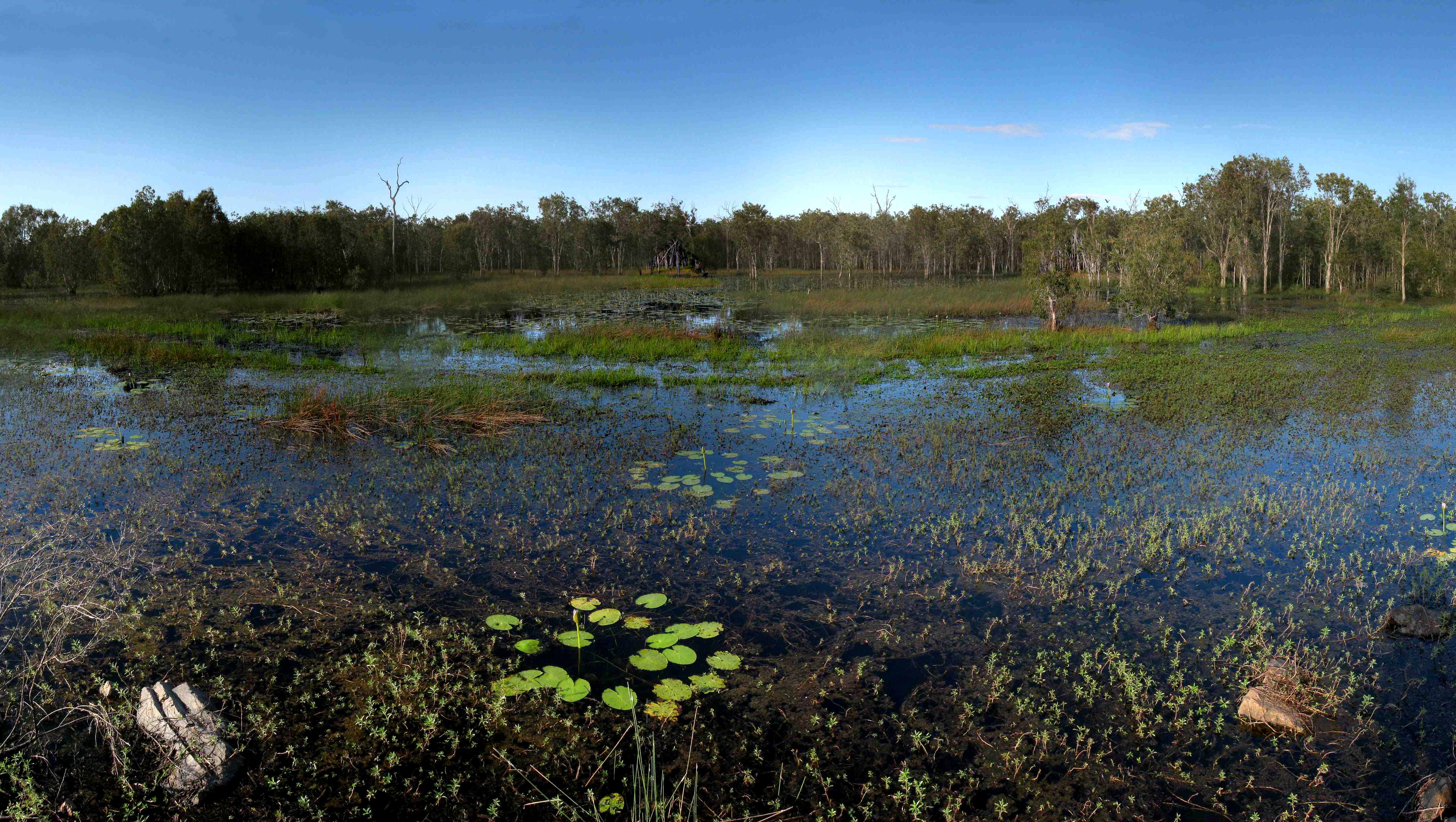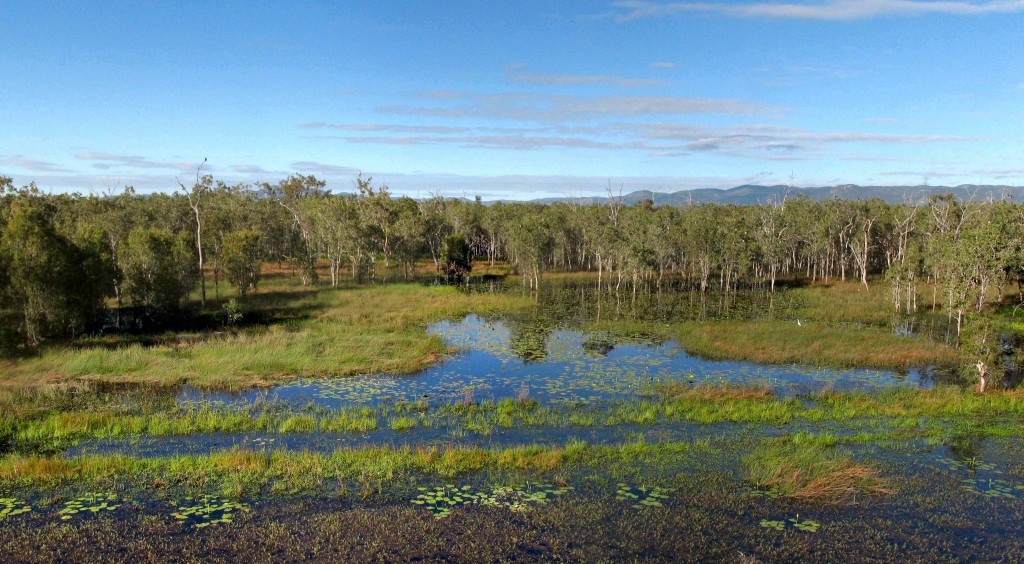Beneath a clear sky promising more of this nation’s 19-degrees-from-the-equator heat, Vilis and I joined the Townsville Region Bird Observers Club for an excursion to Ross River Dam. Located south of the suburb of Kelso, the dam, which harnesses the Ross River to supply the city’s water needs and to mitigate flooding during the Wet, stretches from the base of the Herveys Range in the southwest to the base of Mount Stuart in the northeast. In January, Vilis and I walked the top of the section of the dam near the spillways, spotting egrets and snakebirds (anhingas), great crested grebes and hardhead ducks on the waters of Ross Lake, as well as allied rock wallabies racing among the boulders buttressing the dam. Today, we drove parallel to that section of the dam and then hiked along two edges of the vast wetland formed by the western, shallow margins of Ross Lake.

Ross River Dam Wetland (© Vilis Nams)
As expected, the wetland provided habitat for waterfowl such as magpie geese and a black swan, and for a number of Townsville’s coterie of wetland hunters – egrets, kingfishers, pelicans, brolgas, anhingas, ibises, and cormorants. Woodland songbirds flitted and chorused in wetland trees, and insect-hunters abounded – swallows and martins, woodswallows, flycatchers, and insect death on beautiful wings in the form of rainbow bee-eaters. Overhead, rainbow lorikeets, pale-headed rosellas, and red-winged parrots as brilliantly green and red as any Christmas ornament, painted vivid avian colours against the sky.
In the dry grassland to the north of the dam, a wee willie wagtail swished its elegant black tail, and a trio of Australian bustards – tall, open-country dwellers and Australia’s heaviest flying birds1 – walked with slow stateliness across a mowed strip and disappeared into cover provided by tall grasses and scattered shrubs. Although Vilis and Janis had observed bustards in Western Australia, I was startled to see them here in Townsville. However, the geographic range covered by the species extends from the west coast to the east coast of mainland Australia, and from north to south.1 Perhaps, by the end of this year, Vilis’s and my geographic rangings will as well.

Ross River Dam Wetland (© Vilis Nams)
Today’s birds: black kites, royal spoonbills, anhingas, little black cormorants, little pied cormorants, red-tailed black-cockatoos, Australian white ibises, Australian pelicans, great egrets, rainbow lorikeets, pale-headed rosellas, *white-winged triller, sacred kingfishers, forest kingfisher, whistling kites, *red-winged parrots, Australian magpies, magpie-larks, *black-faced woodswallows, leaden flycatcher, rainbow bee-eaters, peaceful doves, white-bellied cuckoo-shrike, yellow honeyeater, magpie geese, black swan, sulphur-crested cockatoos, brolgas, willie wagtails, *Australian bustards, little friarbird, striated pardalote. Also, allied rock wallabies. (*denotes lifelist sighting)

Ross River Dam Wetland (© Vilis Nams)
Reference:
1. Graham Pizzy and Frank Knight. The Field Guide to the Birds of Australia. 1997. Angus & Robertson, Sydney. p. 158.


